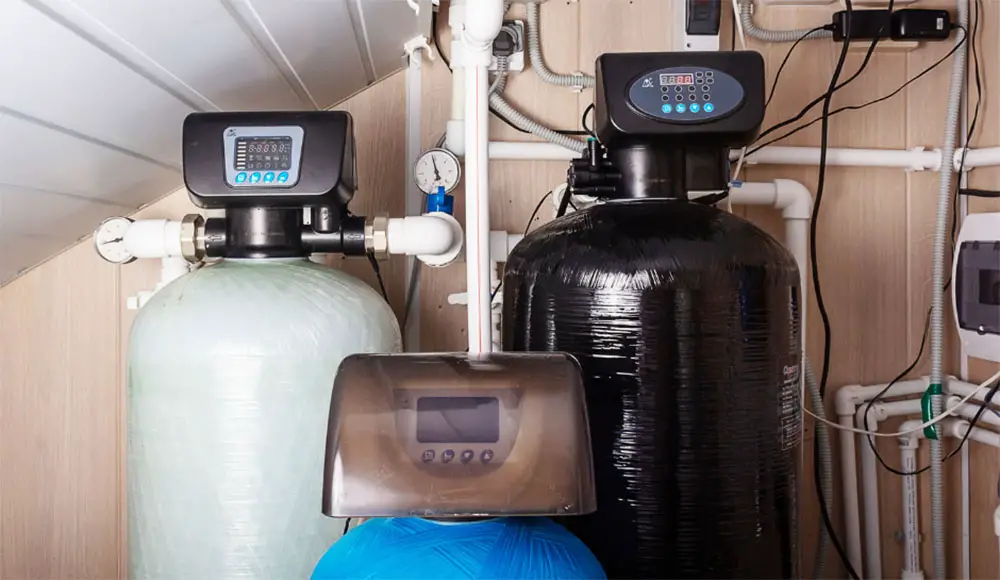Hey! This site is reader-supported and we earn commissions if you purchase products from retailers after clicking on a link from our site.
If you live in a hard water area, you will be familiar with the negative effects. Faded clothes, dryer hair and skin, limescale build-ups, and even higher water bills are at the top of the list.
All of these things can add up to equal a major grievance and it’s hard to imagine how to fix it. You can’t change your water source, after all. Using bottled water for everything would be impractical and expensive. So, what can you do?
Using a water softener is a good way to bring your water back down to acceptable levels. It can increase the lifespan of your water appliances such as washing machines, dishwashers, and even your coffee machine.
Our Kinetico Water Softener Reviews
Kinetico Essentials Series Gold Water Softener
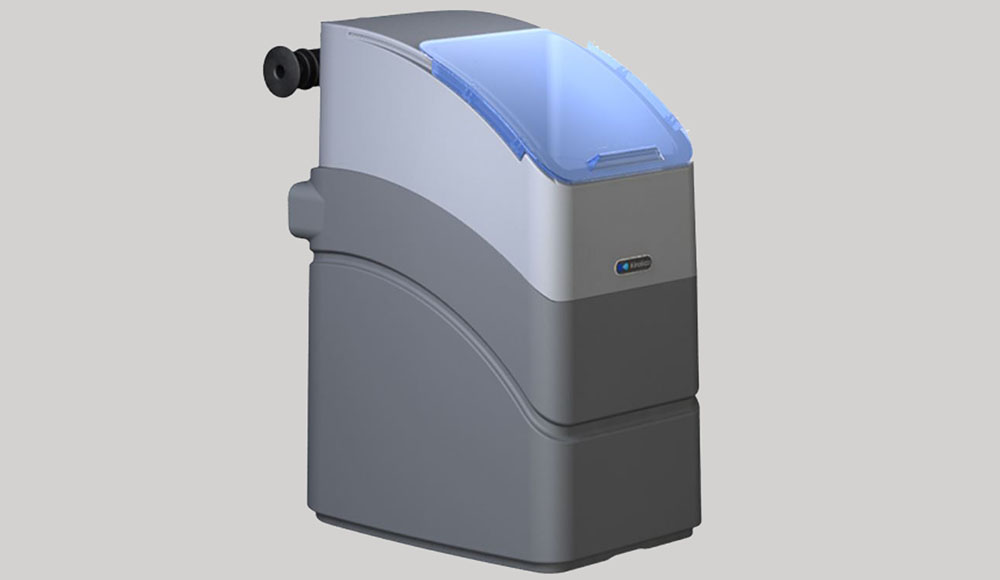
The Kinetico essentials series are popular products.
Here we will take a look at the Gold water softener. These water softeners are non-electrical, instead powered by water. This means the regeneration process happens unaided by timers. Instead, it is guided by the water pressure.
Though this model is a single tank, owing to the fast regeneration time, there won’t be too much of a lag between regeneration and receiving soft water.
Pros
- No Electricity: This is high up on the pro list. These water softeners are instead led by water pressure in the tanks. The device knows when to regenerate by tracking the amount of water going into the tank.
- Fast: The regeneration process, vital to maintaining low levels of magnesium and calcium, only takes fifteen minutes. This is much faster than the average time. Other tanks take around two hours to complete regeneration.
- Efficient: This model uses less than a pound of salt per regeneration cycle. This is low comparatively.
Cons
- Small: The Essentials range at Kinetico, does not have the largest tanks. Which means they are more suitable for a smaller home with fewer appliances.
Kinetico Signature Series
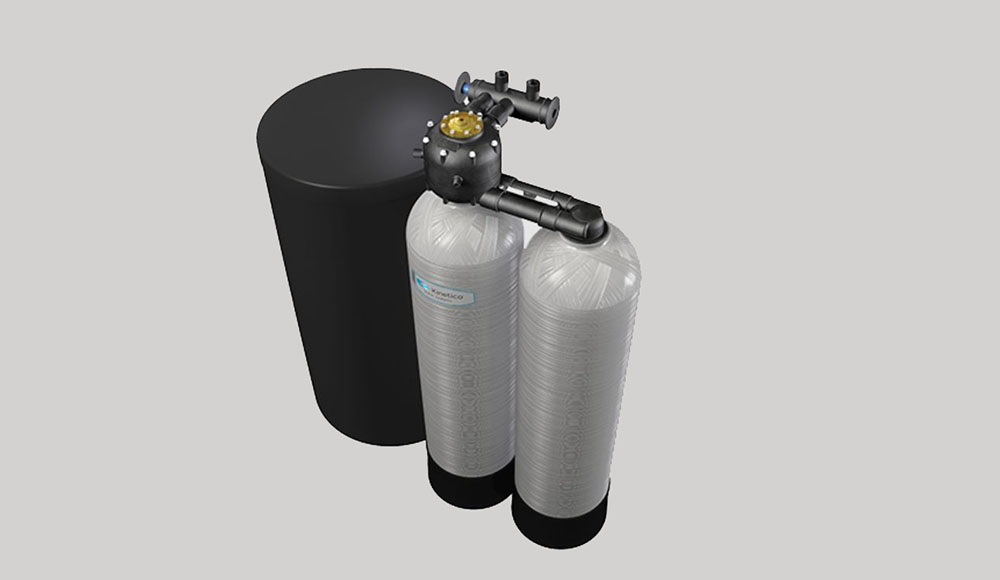
The Kinetico Signature Series is the middle range of products available. They have a twin tank, unlike the single tank of the Essentials range. A twin tank means no waiting time for soft water during the regeneration process.
They are also operated by water pressure in the tanks. This elimates the need for an electrical input and, makes them more economical overall. They have a slighlty longer regeneration time of 40 minutes. Though this is not a downside as we discovered above. The twin tank means a constant supply of soft water.
Pros
- Twin tank: If you are looking for a constant supply of soft water, twin tanks are the way forward.
- Larger capacity: The Signature Series are built to facilitate more appliances. They would therefore suit a larger home or, more people.
Cons
- More salt required: The bigger model naturally requires a larger amount of salt. The salt will need replacing more often and added in larger quantities.
Kinetico Premium Series
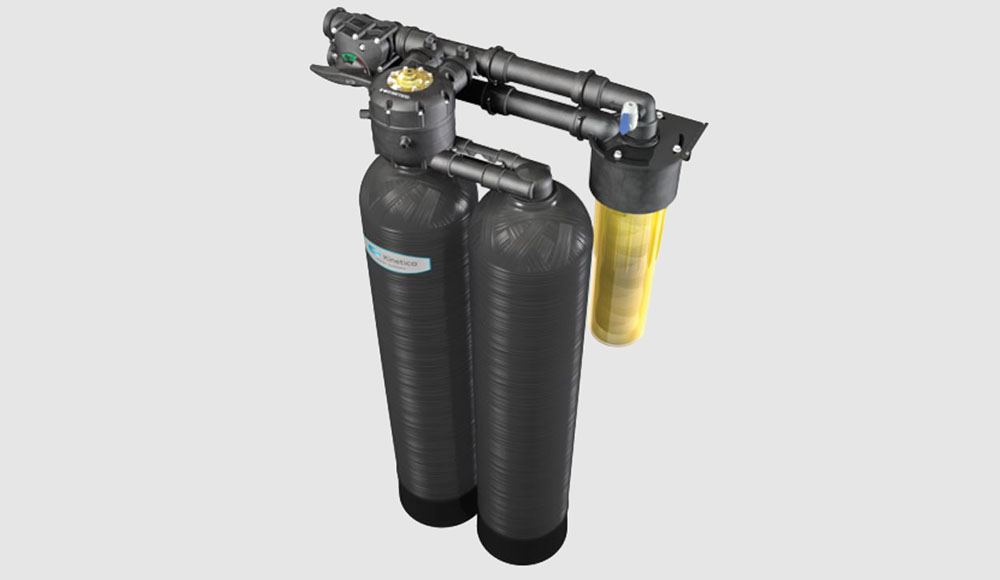
The Premium Series has a larger range of water softeners. There are larger capacity tanks, some of which can hold up to 29 gallons of water. There are smaller capacity tanks that can hold around 15 gallons of water.
The larger tanks, as expected, have a longer regeneration time (around 40 minutes). While the smaller tanks can regenerate the water in just over ten minutes.
These tanks are the top of the range products that Kinetico make and supply. They are able to easily account for a larger number of appliances and work quickly and efficiently to eliminate magnesium and calcium from the hard water source.
Pros
- High function: The twin tank feature is a commonality across the Premium series. With a twin tank, you have a constant supply of soft water and, don’t have to wait around for regeneration completion.
- Customizable: What makes the Premium Series stand above the rest is the ability to customize. With a simple dial, you can adjust the usage as per the need in your home. Therefore, overall these water softeners are more cost-effective than other Kinetico series.
Cons
- Higher cost: Not always a deterrence, the Premium Series may come with a premium cost. Having a larger upfront cost alongside a larger ongoing maintenance cost can be off-putting overall.
Buyer’s Guide
How Do Water Softeners Work?
Water softeners work by moving ions. They are installed near your main supply source and require low maintenance upkeep.
The main thing to remember is to check and replenish the salt levels at least bi-monthly. This will make sure that the water softener can function properly.
So, what is an ion? An ion is a group of atoms. They make up the whole universe.
They can have a positive or negative electrical charge and can be manipulated. Water softeners do just that. They trap the magnesium and calcium ions in beads at the bed of the device and replace them with sodium.
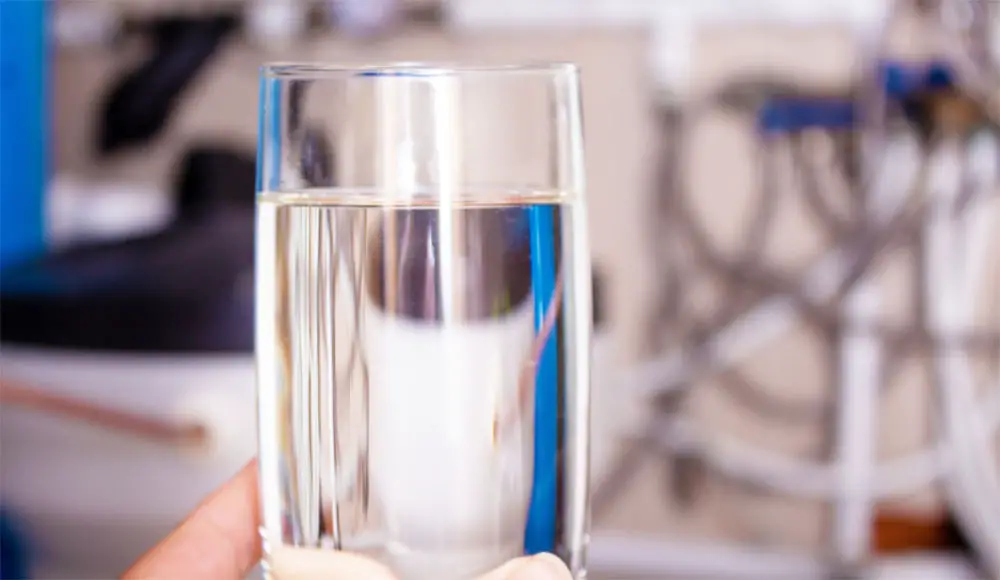
Don’t worry, you won’t have salty tasting water. The sodium itself does not transfer into your water supply. It stays in the softener tank.
High levels of magnesium and calcium are the cause of hard water. When you remove these from the source supply, the water becomes soft. Soft water reduces the limescale presence in the pipes of your house.
This can lead to longer lasting appliances, longer lasting clothes and, healthier skin and hair.
After capturing the magnesium and calcium particles, the water softener needs to ‘flush’ out. Then the process can start all over again. The flushing out process is called regeneration.
How Often Should You Be Replacing Your Water Softener?
A water softener can last up to and, sometimes past, fifteen years. They do require regular maintenance so, you can’t just leave it to do its job unaided. Eventually, they may become less and less effective owing to salt build ups or tank erosion.
There are some tell-tale signs to look for to help you understand when your water softener may be on its way out of the door:
- Cloudy glasses and plates. Cloudy crockery and glassware can occur because of a mineral build-up. The main culprit? Calcium. Calcium often leaves a chalky type of residue when dishes and glasses dry. You may not notice this after the initial clean however, you will see it clearly after the pots and pans have dried. This can occur after using a sink or using a dishwasher. The water source is the same.
- Your clothes aren’t washing as well. If your clothes start to feel less soft than before. If they are feeling itchy and worn. These are both tell-tale warning signs of hard water. You may even notice that stains don’t come out as easily as before. Or, there are new stains after washing. These new stains are caused by the excess of minerals in the water supply. They, much like pots and pans, leave behind a residue on your laundry.
- Rust! Rust around taps is a big clue to show you may need a new water softener. Hard water causes limescale which in turn causes rust. This is because of the iron content in the water and the limescale. It’s not just your taps and stainless steel water features that can suffer, it is also your pipes. A rust build-up is unsightly in your home however, it can cause expensive and dangerous damage if left to stew in your pipes.
Frequently Asked Questions
Limescale is the white and chalky flakes in your water appliances. Limescale is a mixture of different things. The main two components are magnesium and calcium. There is often an iron presence.
All of these ions can cause decay, stains, and rust. If untreated, they will lead to extortionate repair jobs alongside having to replace clothes, dishes, and more.
A build-up of limescale can be negative for a few reasons. The obvious answer is; it doesn’t taste great. If you have a limescale problem, you may notice white flakes in your kettle which then end up in your hot drinks.
That is limescale and, it can affect the taste. Thankfully, ingesting the small amount present in drinking water is not overall harmful to your health.
If there is a limescale problem in your pipes, then this can ultimately inhibit water flow. This can lead to low pressure and, less effective cleaning. If ignored, a pipe with too much limescale can become blocked or leak. This will be expensive to fix.
In rarer cases, limescale can contain dangerous bacteria. This bacteria can lead to Legionella disease. This is akin to pneumonia with similar symptoms such as a high fever, breathing problems, and a cough.
Short answer? Yes. Softened water is completely safe for our bodies. The concern may be the high levels of salt used in the process of softening water. However, no significant level of salt makes its way through the tap and into your water stream.

